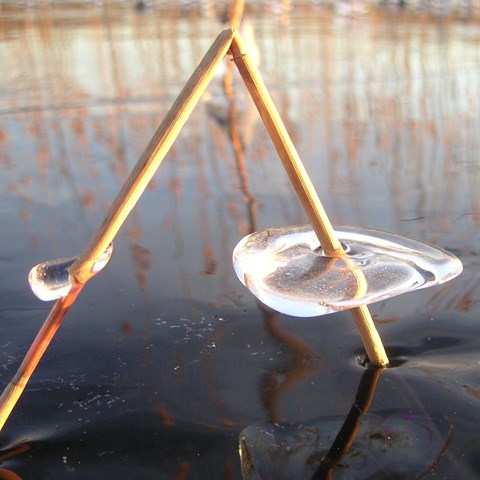Contact
Lisbeth Slunga Järvholm, Professor, senior consultant (attending) physician at Department of Public Health and Clinical Medicine, Umeå University
lisbeth.slunga-jarvholm@umu.se

Human life is characterized by dynamic processes and biological rhythms. When we are active during the day, we become stimulated and engaged, but also tired after a while. Long-term good health is characterized by a dynamic situation where we constantly switch between activity and relaxation/recovery. Therefore, it is difficult to find an objective measure that illustrates health and well-being.
Human life is characterized by dynamic processes and biological rhythms. When we are active during the day, we become stimulated and engaged, but also tired after a while. Long-term good health is characterized by a dynamic situation where we constantly switch between activity and relaxation/recovery. Therefore, it is difficult to find an objective measure that illustrates health and well-being at a certain timepoint. You also need to take into account the context and the time course.
Physical exercise promotes health. However, physical exercise can also be described as a form of activation or physical stress reaction that needs to be followed by rest and restoring processes to become beneficial. Intellectual challenges can similarly be stimulating and involve learning and positive development. But also in that case, regular mental rest and recovery are needed for long-term positive effects. When measuring physiological parameters, such as pulse and blood pressure, during activity and rest you get different results, but in both these situations the results can be part of a long-term healthy process.
Healthy activities in nature can thus entail both active and more restful conditions. We usually want to measure signs of recovery of nature, but also more demanding activities in nature, such as physical exercise and social interaction may in the long run be health promotive.
For many, life has become too demanding and hectic. We feel stressed and do not get enough recovery between laps. We may in that situation down prioritize many healthy activities such as physical exercise and spending time with friends. But spending time in natural environments can help us shift focus and relax. In addition, nature stimulates us to healthy activities. Of course, we want to be able to measure these effects objectively, but it is a great challenge to be able to do so under different conditions and varying outdoor activities.
In real life, it is difficult to isolate the influence of a specific factor from everything else that happens at the same time. When we do experimental research, we try to keep all other factors constant, but at the same time it means a rather unnatural situation, which can only be maintained for a limited time.
When we spend time out in nature there are many things that affect; nature's characteristics, our previous experiences, weather and wind, equipment/clothing, day form, food intake, whether we are physically active or not, simultaneous social contexts, life events, current medications and diseases etc. Age and gender could also matter. All this means that it is difficult to refine the effects of the natural environment alone.
In research, you prefer to have some form of control group or control situation where the people are not exposed to the factor you want to study, but where everything else is the same. This is difficult to achieve in reality. Methodologically, it is therefore an advantage if you can make repeated measurements on the same person. One could, for example, measure in nature and in urban environment respectively, on the same individual.
We can measure rapid, transient reactions of staying in nature, such as emotions, well-being, heart rate, blood pressure and hormones. But we can also examine more long-term effects on health. In the latter case, epidemiological studies are often used. One then studies fairly large groups in the population, who to varying degrees stay in nature, and then follows them up after a long time to examine their risk of developing various diseases. A problem in these studies is that you have to take into account other factors that differ between the groups you study. One could imagine that "natural people" also live healthier in general, exercise more, eat better food, do not smoke, etc.
For evaluation of nature-based interventions and rehabilitation, the best option would be to perform a randomized study where the participants are randomized to a treatment or control group. In these cases, the effects on health are usually examined after one or a few months of treatment. Unfortunately, it is often difficult to get a really good control group and especially when it comes to interventions which are implemented during a long time period.
There has recently been a strong development of new user-friendly methods for estimating physiological effects of stress and recovery. There are e.g. many wrist watches to buy that measure both your heart rate and its variability, physical activity and sleep. You usually receive feedback directly via the mobile.
It is more difficult to make measurements in groups of people because the equipments that are marketed today are usually designed for only individual feedback of the results. If you want to compile data from several people at the same time, you must have access to basic data from the company. And you must also take into account the requirements for integrity and data management that apply. In these cases, it is usually good to collaborate with researchers in the field. There is equipment to buy for research use where it is possible to collect data from many people and easily move all the data to a computer for further processing.
Below is a summary of various methods that can be used to measure health effects in connection with spending time in nature. They are largely based on the theories that underlie nature's health-promoting effects and most of them have been used with good results in previous research.
/Text: Lisbeth Slunga-Järvholm
Lisbeth Slunga Järvholm, Professor, senior consultant (attending) physician at Department of Public Health and Clinical Medicine, Umeå University
lisbeth.slunga-jarvholm@umu.se